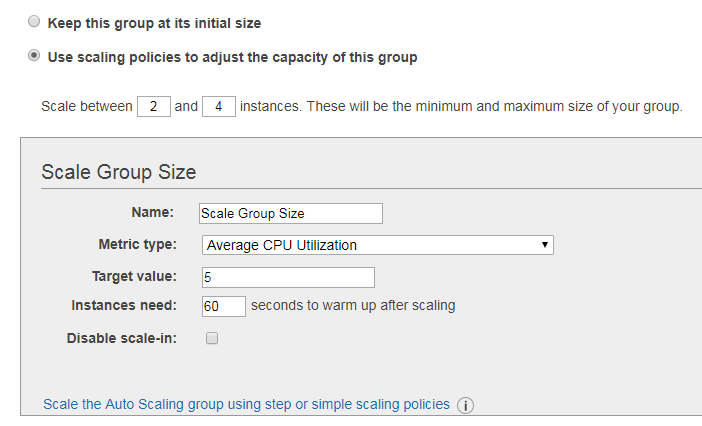AWS Auto Scaling Group service allows you to set up a logical grouping of similar EC2 instances that can used to ensure that a certain amount of instances is running at all times. This can be done for many different purposes, such as high availability, automatic scaling based on external criteria (website getting hammered), and capacity management. Honestly, you should be using ASG at all times - even if you have one instance running. ASG can help ensure that this instance is recreated in case it is terminated.
AWS Auto Scaling Groups service consists of two critical components: Auto Scaling Groups and Launch Configurations. Auto Scaling Groups requires a Launch Configuration to function. A Launch Configuration is a configuration of which and how an AMI is instantiated into a running instance.
Think of it as a template that a particular Auto Scaling Group uses to launch EC2 instances within the AWS environment. You can specify things such as:
- SSH key pair
- AMI ID
- One or more Security Groups
- EBS block devices mappings (basically virtual drives)
- Default IAM role
- Custom User Data code
Auto Scaling Groups use Launch Configurations to ensure that there is at least 1 instance (minimum) of such configuration always running. You can set amaximum number of instances that can run sharing the same configuration. The super nice thing is that Auto Scaling Groups can span multiple Availability Zones within a region so you can protect yourself from a zone failure.
To further make them more powerful, Auto Scaling Groups can be attached to Elastic Load Balancers in order to automatically scale if instances become unhealthy or when demand raises. Instances within the Auto Scaling Group will automatically register with the load balancer and will be tracked using the ELB Health Checks.

Scaling Policy settings within Amazon's Auto Scaling Groups service
With this functionality, you can have a set of web application servers within an Auto Scaling Group fronted by an ELB. If the ELB notices an unhealthy instance, it will automatically tell ASG to terminate the sick instance and create a new one. ELB will also send health data to CloudWatch for monitoring purposes. You can track information such as standby instances, healthy instances, pending instances, and terminating instances.
In addition to utilizing ELBs, you can set scaling policies within the Auto Scaling Group. Some of the example policies include a check for average CPU utilization. If that spikes, you can increase the amount of instances. Besides average CPU utilization you can also use the following metrics:
- Application Load Balancer request Count Per Target
- Average Network bytes in
- Average Network bytes out
Auto Scaling Groups also support notifications using Amazon's SNS service. This functionality is helpful in sending alerts when your instances are either:
- launched
- terminated
- failed launch
- failed termination
With this you can be notified when your ASG does something. With a little bit of help from CloudWatch Events and Lambda functions you can also set off other mechanisms within your environment. Some of these include automatic config provisioning and application restarts. You can check out more about this here.
Comments
comments powered by Disqus